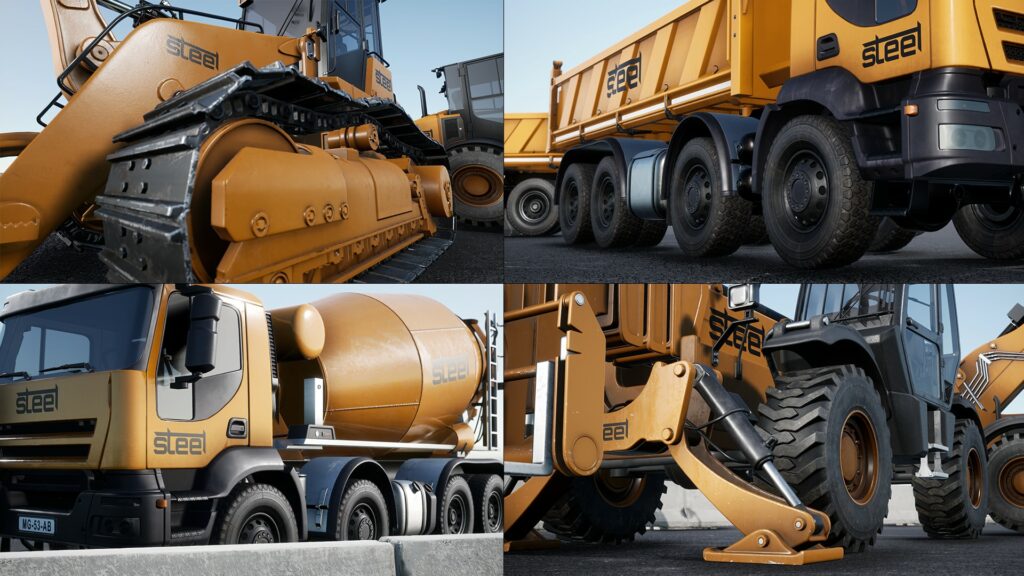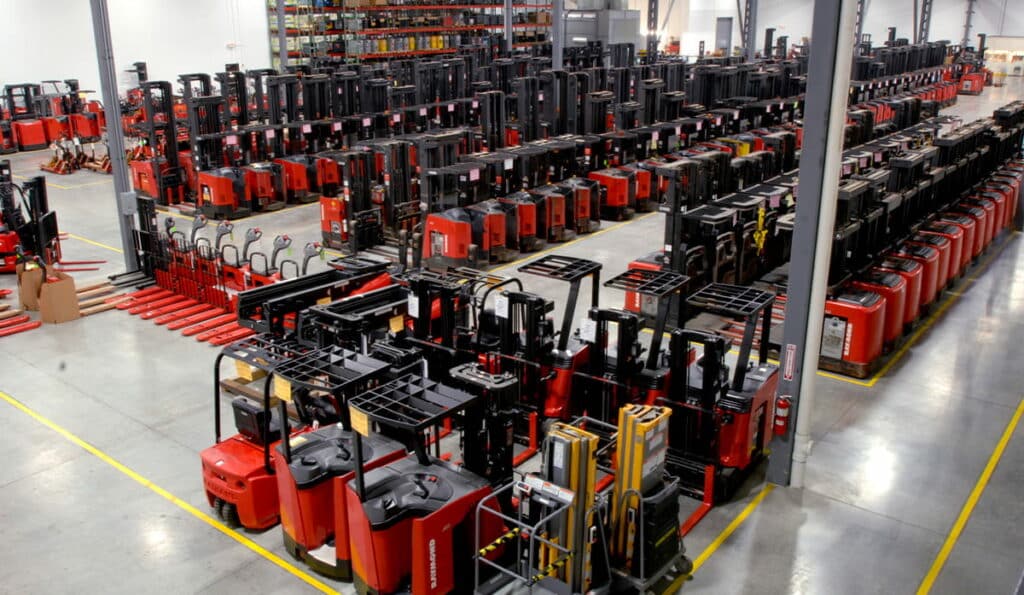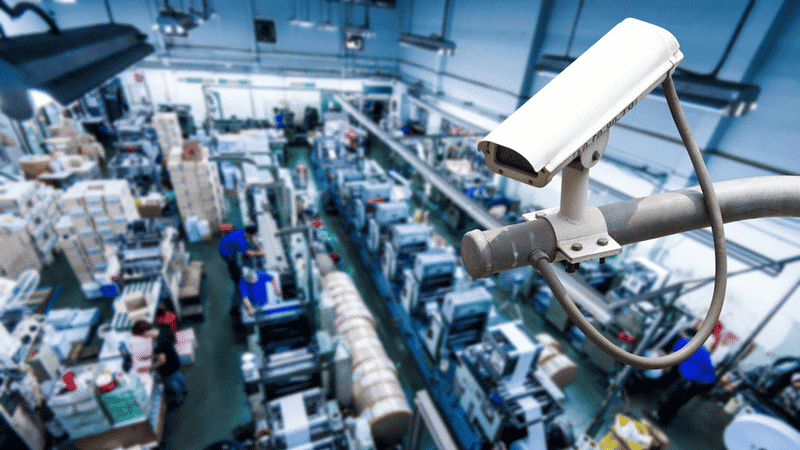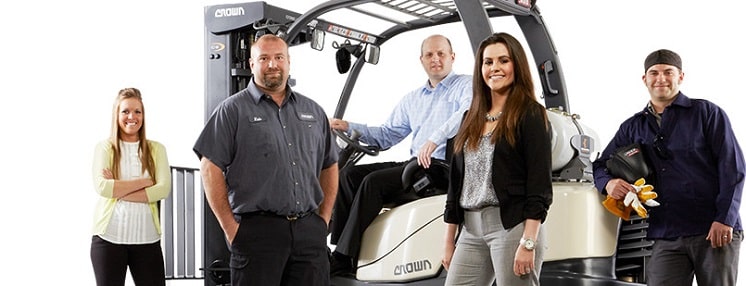Starting an Equipment Rental Business Costs $813,000 to $960,000

👇 Check all our resources on Equipment rental businesses 👇
Are you looking to start your own equipment rental business? As part of your business plan, make sure to consider all the startup and operating costs to open and run an equipment rental business.
We’ve identified that it costs around $813,000 – $960,000 to start a 10,000 sq. ft. equipment rental business with 35 heavy construction vehicles, plus $108,000 – $121,000 in operating costs per month to run the business.
Want to know more? In this article we’ll go through all the different costs you will need to budget for before you can open your own equipment rental business. Read on!
Equipment Rental: Startup Costs
The costs to start an equipment rental business depend on the type of equipment, machinery or vehicles making up your inventory (referred to as “units” in this article) as well as the number of these units.
The startup costs vary mostly depending on 3 factors:
- The type of equipment you lease (e.g heavy construction equipment vs. light equipment & tools)
- The number of units you have in inventory
- How you finance the acquisition of the equipment (standard debt vs. leasing debt vs. equity)
Therefore, we have laid out below the example of a construction equipment rental business that leases 35 heavy vehicles.
| Startup cost | Amount |
|---|---|
| Acquisition of the inventory (vehicles) | $700,000 |
| Warehouse & office (deposit) | $30,000 – $60,000 |
| Renovation and design | $50,000 – $150,000 |
| Insurance | $3,000 to $7,500 |
| Office equipment & security hardware | $30,000 – $45,000 |
| Total | $813,000 – $960,000 |
Equipment inventory startup costs
Also referred to as “fleet” for equipment rental businesses that lease vehicles, the main cost to start such a business is the expense to acquire the inventory itself (the vehicles or equipment).
In order to acquire the inventory, there are 2 options available to you, each with its respective upsides/downsides:
- Purchase the vehicles with a combination of debt and equity. For vehicles, it’s common to obtain what we call “equipment financing” debt where you only need to put down 10% to 30% of the cost upfront. The rest comes from the bank that extend you a loan which comes with interest (anywhere from 5-7% per year)
- Lease the vehicles from the manufacturer, an investor or a bank. In this scenario, you are renting the vehicles over a long period of time (typically 5+ years) from a company that gives you the right to lease them to your customers. This option is often cheaper upfront (as you only need to pay a small deposit for the lease)
Both alternatives are relatively similar when it comes to your finances. Indeed in both cases you will need to pay an amount upfront (the loan or the lease downpayment).
Yet, whilst you own the vehicles in the first option, you don’t in the latter, which may cause issues and restrictions on how you do business (e.g. maintenance, accidents).
Also, leasing the vehicles is almost always more expensive in the long term (as lease interest is higher vs. bank interest, and because you typically put down a higher downpayment for standard debt vs. leasing debt).
So, assuming you start with a fleet of 35 vehicles at an average purchase price of $100,000, the total cost to acquire the fleet will be about $3,500,000.
Yet, assuming you acquire the vehicles with debt, and you pay 20% loan downpayment upfront, the actual startup cost is only $700,000. The remaining $2,800,000 will need to be repaid over time (assuming 8 years) at interest.

Warehouse & office (deposit)
You will need to rent (or buy) a warehouse where you can store and park your equipment, vehicles and machinery. This will also serve as the main place of business where you will receive your customers, install your offices, etc.
Assuming you decide to rent, you will need to pay a 3- to 6- months refundable lease deposit.
Of course, the rent (and consequently, the lease deposit) will depend on the space and the real estate rental price (per sq. ft.).
Now, let’s assume you set up your equipment rental business on a 10,000 sq. foot commercial space in an industrial area, and you pay $12 per square foot per year. That comes about $10,000 per month in rent, and $60,000 for a 6-month lease deposit.

Renovation and design costs
Now that you have a commercial space where you can receive your customers and store your inventory, you may want to improve and/or build facilities. These facilities can be the warehouse itself (about $15 per sq. ft.), the store, the office, etc.
Of course, the facilities available onsite are already factored in the rent. So assuming that you pay $10,000 per month for a commercial space with a 8,000 sq. ft. warehouse and office space, you may only need to spend some money in renovations (improve the front desk area for example).
Basic renovation costs such as painting and repainting, lighting, minor repairs, and decorations can easily add up. Assuming you only need to revamp the 2,000 sq. ft. office and front desk area at an average cost of $56 per sq. ft., you should expect to pay around $112,000 in renovation costs.
Equipment rental insurance costs
Before you can do business, you will need to get insurance to cover for some unexpected incidents. The different insurances required for an equipment rental business typically include:
- Commercial Auto: covers accident-related costs resulting from the use of equipment. It also covers losses to the rental, such as collision, fire and vandalism damage, and theft
- General Liability: more broad form of business liability insurance that offers protection in the event of injuries and damage sustained by 3rd parties due to the rental equipment operator’s negligence
- Inland Marine (IM): covers products and equipment when transported over land or while temporarily warehoused by a 3rd party (the customer for example). As such, an Inland Marine policy covers losses from events such as weather, theft and accident damages that occur while the rental is in transit and / or stored at a 3rd party
- Renters Liability: Covers physical damage to any unit(s) under the rental contract
The type of insurance policies also vary whether you own or lease the equipment itself.
For a quote, contact your local insurer. On average, you should pay around $3,000 to $7,500 per year for a general liability and inland marine policies for 35 vehicles.

Office Equipment & Security
In addition to the inventory itself (the vehicles), you will need to purchase office supplies and equipment (computers, printers, security system, POS, etc.) no matter the size of your equipment rental store.
For the office, you can set aside $15,000 to $30,000 for the furniture and equipment for a small team.
For security, a business with a large warehouse will spend more vs. a small store. On average, expect to pay $600 per camera and an additional $1,500 – $3,000 for the installation and monitoring hardware. Assuming you have 20 cameras, this can cost up to $15,000.

Equipment Rental: Operating Costs
Unlike startup costs, operating costs are the ongoing monthly expenses you will incur to keep your business running. This list includes for example: rent, maintenance of the inventory/equipment, staff costs, utility bills and marketing.
| Operating cost | Amount (per month) |
|---|---|
| Rent | $10,000 |
| Fleet maintenance (35 vehicles) | $12,000 – $20,000 |
| Staff | $80,000 |
| Marketing | $3,000 – $6,000 |
| Utility bills, other | $3,000 – $5,000 |
| Total | $108,000 – $121,000 |
Rent
Unless you acquired the real estate, you will need pay rent every month. Using our example above, you should set aside $10,000 per month for a 10,000 sq. ft. commercial space (at $10 per sq. ft. per month).
Equipment rental fleet maintenance costs
Whether you rent heavy machinery, vehicles or small equipment and tools, you will need to spend money on maintenance and servicing. Unfortunately, there is no average here. The cost depend on the type of equipment you rent, their quality as well as their usage.
Depending on the size of your business, you can employ on-site mechanics and technicians to help with frequent vehicle maintenance and servicing. Alternatively, you can frequently contact an external team to handle everything.
For example, a crane will cost between $4,000 to $6,000 per year in preventive maintenance. So assuming you rent 35 heavy machinery and vehicles, you can expect to spend the same ($4,000 to $6,000 in maintenance per unit per year).
Therefore, maintenance costs can range from $140,000 to $210,000 per year for such a business. This includes spare parts, technicians’ and mechanics’ salaries as well as any other 3rd party maintenance costs.
Equipment rental staff costs
Assuming you run a fleet of 35 construction vehicles, you will require about 3 operators at all times onsite for the smooth running of business operations (handling deliveries, cleaning, etc.). This is in addition with other support staff (receptionists, finance & HR, etc.).
For a company leasing 35 heavy vehicles and equipment, here is an example of the number of employees you would need:
- 2-3 personnel dedicated to offering client support (booking, reception); and
- 2 on-site specialist mechanics to help with frequent servicing and preventive fleet maintenance ($56,000 average salary)
- 3-4 operators ($65,000 average salary)
- 2-3 sales reps ($115,000 average salary)
- 2 support staff (HR & finance)
- 2 management (CFO, CEO)
In total, you would incur around $80,000 per month to cover monthly wages of the 12-15 employees including management (including 20% taxes and benefits).






